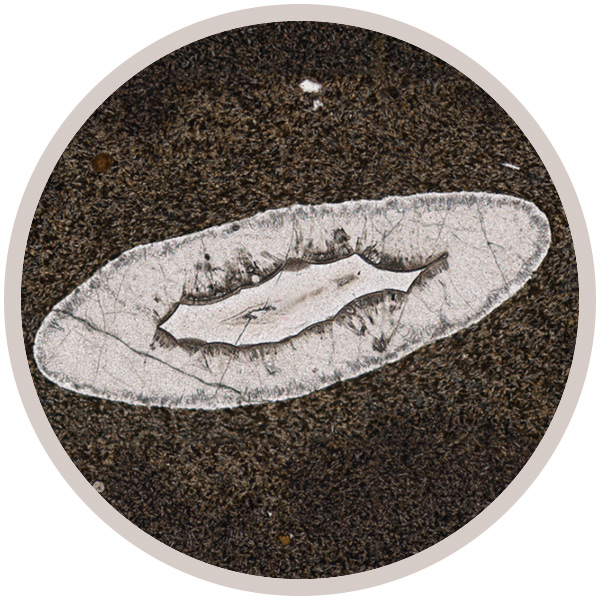
Fact sheet
This rock comes from the Canna Lava Formation (post-Central Complex lavas located in NW Rum). It was intruded in the Paleogene during the formation of an ancient volcano, now deeply eroded, which in turn was part of the large North Atlantic volcanic province. One feature of the formation is that lavas are interbedded with conglomerates and plant-bearing sandstones, demonstrating the close association of the lavas with water and erosion of older rocks. The water may have contributed to the nature of this basalt flow, which has many holes (known as vesicles) formed by bubbles in the original flow. The holes are now filled by minerals that precipitated from the hot fluids that percolated through the lava after it solidified. This rock was collected from Bloodstone Hill on Rum.
The thin section specimen shows a fine-grained matrix that is mostly plagioclase, pyroxene and glass. Variations in staining appear to indicate water penetration varied within the rock, as did the alteration. Smaller elliptical vesicles appear to have been filled by a brown zeolite that shows concentric zoning, while larger vesicles contain radiating roses of chalcedony that grew from the walls inwards, eventually filling the entire space. The rock also contains plagioclase phenocrysts and one fragment of partially resorbed basalt with slightly larger plagioclase grains.
The United Kingdom Virtual Microscope (UKVM) collection consists of igneous, sedimentary and metamorphic rocks from around the UK.
It is intended as a teaching resource, helping to tell the story of the common rock types and how they form, and reflecting the history of the UK at the margins of the continent of Europe. The collection is a series of teaching sets, for example igneous rocks from the North Atlantic Igneous Province and SW England; high-temperature metamorphic rocks from Scotland and low-temperature metamorphic rocks from Wales; and sedimentary rocks, including English limestones and sandstones.






